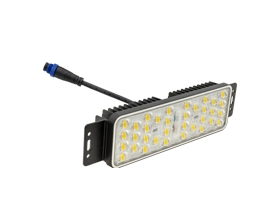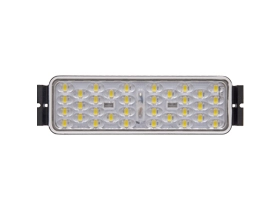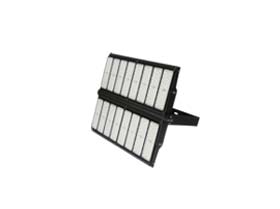Factors Affecting the High Temperature of LED Street Light Heads
It is said that summer is coming, and LED street lights will be used for a long time after they are turned on in summer, gradually causing the temperature inside the LED lamp to rise. If the generated heat cannot be dissipated in time, it will have a great impact on the service life of the street lamp, and severe cases may cause damage to both the LED street light and the street light head.
Who is responsible for the stable operation of LED street lights?
Just like traditional light sources, LED light sources, a type of semi-conductor light-emitting diodes, also generate heat during operation, and the amount of heat depends on the overall luminous efficiency.
Under the action of external electrical energy, radiation recombination of electrons and holes occurs to produce electroluminescence, and the light emitted near the PN junction needs to pass through the semiconductor medium and the packaging medium of the chip itself to reach the outside world (air).
Considering injection efficiency, radiation quantum efficiency of luminous intensity, and external light extraction efficiency, only about 30%-40% of the input electrical energy is converted into light energy, and the remaining 60%-70% of energy is mainly converted into thermal energy in the form of non-radiative recombination-generated lattice vibration.
Therefore, we believe that the stability and quality of LED street lights are closely related to the heat dissipation of the lamp body itself. The heat dissipation of high-brightness LED lamps on the market often uses natural plug-in heat sinks, which is not ideal. Therefore, the street lighting factory needs to continue to improve in this respect.
The impact of high temperature on LED street lights
The main structure of LED lamps, such as LED street light and LED tunnel light, using LED light sources consists of LED, heat dissipation structure, driver, lens, and other parts. Therefore, heat dissipation is also an important part. If the LED cannot dissipate heat well, its service life will also be affected. Heat management is a major issue in high-brightness LED applications.
Due to the limited p-type doping of group III nitrides by Mg acceptors' solubility and the high activation energy of holes, heat is particularly easily generated in the p-type region, and this heat must be dissipated on the entire structure via heat sink; the main heat dissipation pathways of LED devices are thermal conduction and convection; the extremely low thermal conductivity of the substrate material increases the thermal resistance of the device, causing severe self-heating effects, which have a destructive effect on the performance and reliability of the device.
The influence of heat on high-brightness LED street lights. Heat is concentrated in the chip with a very small size, and as the chip temperature rises, the uneven distribution of thermal stress will cause a decrease in the efficiency of chip luminescence and phosphor laser efficiency; when the temperature exceeds a certain value, the failure rate of the device increases exponentially.
According to a research, the reliability decreases by 10% as the component temperature rises by 2℃. In an LED lighting system composed of multiple LED strings and parallel arrangements, heat dissipation has always been a concern in the industry. Solving the heat dissipation problem has become the primary factor in the application of high-brightness LED street lights.
 English
English  العربية
العربية  中文
中文
 日本語
日本語
 Deutsch
Deutsch
 Türkçe
Türkçe



